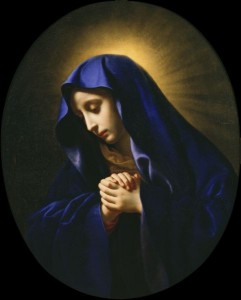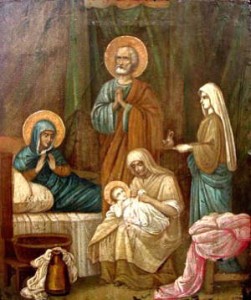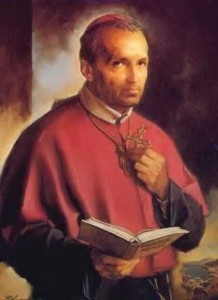 Blessed John Duns Scotus, the teacher of “God’s closeness”. I love the homily below on this great theologian and lover of the Blessed Mother.Â
Blessed John Duns Scotus, the teacher of “God’s closeness”. I love the homily below on this great theologian and lover of the Blessed Mother.Â
CNA- Pope Benedict XVI taught about Franciscan priest and teacher Blessed John Duns Scotus, in one of his Wednesday audiences in July of 2010.  The Holy Father remembered his loyalty and devotion to Christ, the Church and the Successor of St. Peter, as well as his contributions to Christian thought.
During his catechesis, the Pope recalled the life of the medieval Scottish priest and theologian, Blessed John Duns Scotus. He spoke of how the Franciscan, who taught at Oxford, Cambridge, and later in Paris, left France instead of betraying Pope Boniface VIII who was in conflict with King Phillip IV.
This fact, said the Pope, “invites us to remember how many times in the history of the Church, believers have found hostility and promptly even persecution because of their loyalty and devotion to Christ, to the Church and to the Pope.
“We all look with admiration to these Christians, that teach us to protect as a precious inheritance the faith in Christ and the communion with the Successor of Peter and, therefore, with the Universal Church.”
Continuing on the life of the 13th century Franciscan, the Pope said that Blessed Scotus provided three major contributions to Christian thought. The first gift is his “great Christocentric vision” that in the Incarnation “every creature, in and through Christ, is called to be perfected in grace and to glorify God forever.” The second contribution is the theory which led to the dogma “that Our Lady’s preservation from original sin was a privilege granted in view of her Son’s redemptive passion and death.” And finally, Pope Benedict noted his “great attention to the issue of human freedom”as one of his gifts to Christian thought. (more…)
Tags: blessed john duns scotus, blessed mother, Church, death, franciscan priest, homily, love, medieval theologian, pope benedict xvi, theologian
This entry was posted on Thursday, November 8th, 2012 at 4:04 am
You can follow any responses to this entry through the RSS 2.0 feed.
 How can you pack the richness of Fatima into a little ol’blog post here?
How can you pack the richness of Fatima into a little ol’blog post here?
I discerned….you can’t. There is just so much for us to take in and ponder. For a fuller explanation of the approved private revelation I found this wikipedia article gives a fairly balanced presentation – Our Lady of Fatima.
The year is 1917: a dancing sun, an abundance of miracles, and so much more, were all given to wake up an aching world to the consequences of sin and the need to return to the heart and love of the Father, through the beautiful Immaculate Heart of Our Mother, the Blessed Virgin Mary. A message was given to 3 shepherd children…a message basically consisting of prayer, penance and devotion to the Immaculate Heart of Mary. If we can enter into these basic of all practices, our hearts would ultimately find their way “home”…to heaven and to the embrace of our loving Father. Practice of the first five Saturday devotion, frequent recitation of Our Lady’s rosary, and devotion to the Eucharist are all central elements to the experience of Fatima.
Many Roman Catholics recite prayers based on Our Lady of Fátima. Lucia later revealed that she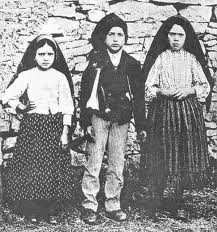 and her cousins had had several visions of an angel in 1916. Calling himself the “Angel of Portugal” and the “Angel of Peace,” he taught them to bow with their heads to the ground and to say “O God, I believe, I adore, I hope, and I love you. I ask pardon for those who do not believe, do not adore, do not hope and do not love you.” Lucia later set this prayer to music and a recording exists of her singing it. Sometime later he returned and taught them a Eucharistic devotion now known as the Angel Prayer.
and her cousins had had several visions of an angel in 1916. Calling himself the “Angel of Portugal” and the “Angel of Peace,” he taught them to bow with their heads to the ground and to say “O God, I believe, I adore, I hope, and I love you. I ask pardon for those who do not believe, do not adore, do not hope and do not love you.” Lucia later set this prayer to music and a recording exists of her singing it. Sometime later he returned and taught them a Eucharistic devotion now known as the Angel Prayer.
Lucia said that the Lady emphasized Acts of Reparation and prayers to console Jesus for the sins of the world. Lucia said Mary’s words were “When you make some sacrifice, say ‘O Jesus, it is for your love, for the conversion of sinners, and in reparation for sins committed against the Immaculate Heart of Mary.‘” At the first apparition, Lucia wrote, the children were so moved by the radiance they perceived that they involuntarily said “Most Holy Trinity, I adore you! My God, my God, I love you in the Most Blessed Sacrament.”Lucia also heard Mary ask for these words to be added to the Rosary, after the Gloria Patri prayer: “O my Jesus, pardon us, save us from the fires of hell. Lead all souls to heaven, especially those in most need.”
In the tradition of Marian visitations, the “conversion of sinners” is not necessarily religious conversion to the Roman Catholic Church, but general repentance and attempt to amend one’s life according to the teachings of Jesus.Lucia wrote that she and her cousins defined “sinners” not as non-Catholics but as those who had fallen away from the Church or, more specifically, willfully indulged in sinful activity, particularly “sins of the flesh” and “acts of injustice and a lack of charity towards the poor, widows and orphans, the ignorant and the helpless” which she saidwere even worse than sins of impurity. – wikipedia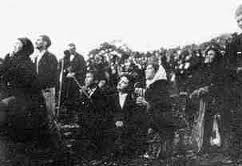
How much the Father loves us all! To allow, through the action of the Holy Spirit, an encounter with Our Blessed Mother, especially one that is so loving and nurturing. Praise God for the grace of courage, perseverance, fortitude and so much more, poured out to those 3 little children who communicated that message to the world. I am reminded of what Jesus once conveyed to St. Catherine of Siena, Doctor of the Church…that He uses the humble (like uneducated fisherman, simple women and little children) to communicate a message from heaven in order to confound the arrogant and to bring an opportunity of humility to us all.
Our Lady of Fatima, pray for us My favorite movie surrounding the mystical experience of Fatima is “The 13th Day” distributed by Ignatius Press. Â Here is another video. film “The Miracle of Fatima” Â
Tags: catholic, catholic podcast, catholic prayer
This entry was posted on Saturday, October 13th, 2012 at 12:57 am
You can follow any responses to this entry through the RSS 2.0 feed.
[powerpress] Msgr. Esseff reflects on the meaning of Our Lady of Sorrows. How do we connect that with the suffering of Christ?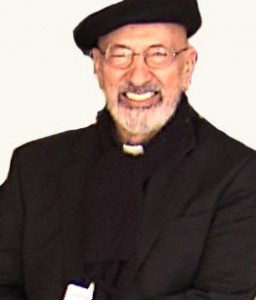 Â All the suffering we endure is united with Jesus, and the Blessed Mother guides our way. Â She is our mother and the power of her love is incredible. Â Ask her to come to you in your suffering as she came to her Son. She is our Our Mother of Hope and Compassion. Â God conquers sorrow with hope!
 All the suffering we endure is united with Jesus, and the Blessed Mother guides our way.  She is our mother and the power of her love is incredible.  Ask her to come to you in your suffering as she came to her Son. She is our Our Mother of Hope and Compassion.  God conquers sorrow with hope!
Hail, holy Queen, Mother of Mercy,
our life, our sweetness and our hope.
To thee do we cry, poor banished children of Eve;
to thee do we send up our sighs,
mourning and weeping in this valley of tears.Turn then, most gracious advocate,
thine eyes of mercy toward us;
and after this our exile,
show unto us the blessed fruit of thy womb, Jesus.
O clement, O loving, O sweet Virgin Mary.â„£ Pray for us O holy Mother of God,
â„Ÿ that we may be made worthy of the promises of Christ.
Msgr. John A. Esseff is a Roman Catholic priest in the Diocese of Scranton. He was ordained on May 30th 1953, by the late Bishop William J. Hafey, D.D. at St. Peter’s Cathedral in Scranton, PA. Msgr. Esseff served a retreat director and confessor to Blessed Mother Teresa.   He continues to offer direction and retreats for the sisters of the missionaries of charity around the world. Msgr. Esseff encountered St.  Padre Pio,  who would become a spiritual father to him. He has lived in areas around the world,  serving  in the Pontifical missions, a Catholic organization established by Bl. Pope John Paul II to bring the Good News to the world especially to the poor. Msgr. Esseff assisted the founders of the Institute for Priestly Formation and continues to serve as a spiritual director for the Institute. He continues to  serve as a retreat leader and director to bishops, priests and sisters and seminarians and other religious leaders around the world.  Â
To obtain a copy of Msgr. Esseff’s book byvisiting here
Be sure to visit Msgr. Esseff’s website “Building a Kingdom of  Love”
Tags: blessed virgin mary, confessor, Good News, our lady of sorrows, PA, retreat
This entry was posted on Saturday, September 15th, 2012 at 8:59 am
You can follow any responses to this entry through the RSS 2.0 feed.
The Seven Sorrows  of the Blessed Virgin Mary
[powerpress]
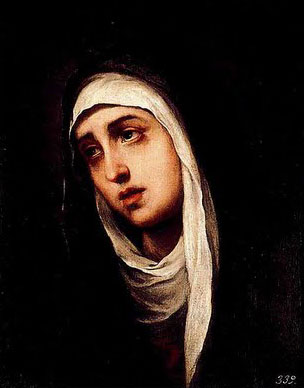 The Virgin Mary, who believed in the word of the Lord, did not lose her faith in God when she saw her Son rejected, abused and crucified. Rather she remained beside Jesus, suffering and praying, until the end. And she saw the radiant dawn of His Resurrection. Let us learn from her to witness to our faith with a life of humble service, ready to personally pay the price of staying faithful to the Gospel of love and truth, certain that nothing that we do will be lost.
The Virgin Mary, who believed in the word of the Lord, did not lose her faith in God when she saw her Son rejected, abused and crucified. Rather she remained beside Jesus, suffering and praying, until the end. And she saw the radiant dawn of His Resurrection. Let us learn from her to witness to our faith with a life of humble service, ready to personally pay the price of staying faithful to the Gospel of love and truth, certain that nothing that we do will be lost.
— Pope Benedict XVI, Angelus – September 13, 2009
Collect:
Father,
as Your Son was raised on the cross,
His mother Mary stood by Him, sharing His sufferings.
May Your Church be united with Christ
in His suffering and death
and so come to share in His rising to new life,
where He lives and reigns with You and the Holy Spirit,
one God, for ever and ever. Amen.
The Devotion from the revelation to St. Bridget of Sweden:
For more prayers for Our Lady of Sorrows
Tags: faith, Jesus, our lady of sorrows, radiant dawn, seven sorrows, st bridget of sweden, stabt mater, suffering
This entry was posted on Saturday, September 15th, 2012 at 12:46 am
You can follow any responses to this entry through the RSS 2.0 feed.
What a joy to have the opportunity to talk once again with Fr. Michael Gaitley at the 2012 CMN Trade Show in Dallas, TX. Â We 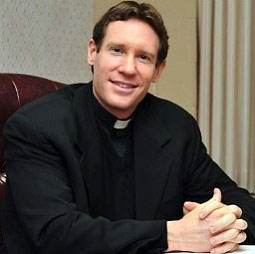 discuss the Year of Faith, “Consoling the Heart of Jesus” and his new book coming soon…”The One Thing is Three”. Â We talk about how the New Evangelization and the role model that Bl. John Paul II was to all of us. Â We all discuss “All Hearts a Fire” the new parish based program which is absolutely FANTASTIC! Â Be sure to check it out and pass it on!
discuss the Year of Faith, “Consoling the Heart of Jesus” and his new book coming soon…”The One Thing is Three”. Â We talk about how the New Evangelization and the role model that Bl. John Paul II was to all of us. Â We all discuss “All Hearts a Fire” the new parish based program which is absolutely FANTASTIC! Â Be sure to check it out and pass it on!
[powerpress]
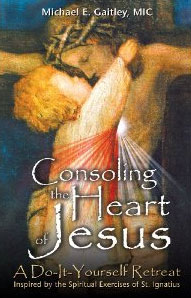 You can find the book here
You can find the book here
Michael Gaitley, MIC’s book is a form of a weekend retreat accessible to those at the beginning stages of a simple way to holiness. While reading this book, I wished I could have had it in conversing with people of little or practically no faith who yet had a longing for the faith that lies at the core of human existence. These hearts are restless until they rest in Thee, Lord and this book guides them on a journey to resting in God. –Fr. Mitch Pacwa
Tags: catholic, catholic podcast, catholic prayer, cathollc spirituality
This entry was posted on Monday, September 10th, 2012 at 9:00 am
You can follow any responses to this entry through the RSS 2.0 feed.
[powerpress]Msgr. Esseff reflects on the birth of the Virgin Mary.  But even more than that, he ponder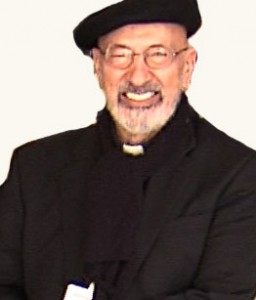 s the importance of the Blessed Mother in our lives.  The gift of her presence in the action of salvation history and  role is the “Mother” of us all.
s the importance of the Blessed Mother in our lives.  The gift of her presence in the action of salvation history and  role is the “Mother” of us all.
Be sure to visit Msgr. Esseff’s website “Building A Kingdom of Love“
Tags: blessed mother, virgin mary
This entry was posted on Saturday, September 8th, 2012 at 9:55 am
You can follow any responses to this entry through the RSS 2.0 feed.
I LOVE it…the birthday of the mother of all “moms”! Happy Birthday to the dearest Mother of all. The Church celebrates 3 birthdays on the calendar…Jesus, John the Baptist, and the great Mother of God, Mary Most Holy. We celebrate the day the Immaculate Conception was brought through birth into the world.  Â
From The Catholic News Agency –
“The Catholic Church will soon celebrate the birth of the Blessed Virgin Mary on its traditional fixed date of September 8, nine months after the December 8 celebration of her Immaculate Conception as the child of Saints Joachim and Anna.
The circumstances of the Virgin Mary’s infancy and early life are not directly recorded in the Bible, but other documents and traditions describing the circumstances of her birth are cited by some of the earliest Christian writers from the first centuries of the Church.
These accounts, although not considered authoritative in the same manner as the Bible, outline some of the Church’s traditional beliefs about the birth of Mary.
The “Protoevangelium of James,†which was probably put into its final written form in the early second century, describes Mary’s father Joachim as a wealthy member of one of the Twelve Tribes of Israel. Joachim was deeply grieved, along with his wife Anna, by their childlessness. “He called to mind Abraham,†the early Christian writing says, “that in the last day God gave him a son Isaac.â€
Joachim and Anna began to devote themselves extensively and rigorously to prayer and fasting, initially wondering whether their inability to conceive a child might signify God’s displeasure with them.
As it turned out, however, the couple were to be blessed even more abundantly than Abraham and Sarah, as an angel revealed to Anna when he appeared to her and prophesied that all generations would honor their future child: “The Lord has heard your prayer, and you shall conceive, and shall bring forth; and your seed shall be spoken of in all the world.â€
After Mary’s birth, according to the Protoevangelium of James, Anna “made a sanctuary†in the infant girl’s room, and “allowed nothing common or unclean†on account of the special holiness of the child. The same writing records that when she was one year old, her father “made a great feast, and invited the priests, and the scribes, and the elders, and all the people of Israel.â€
“And Joachim brought the child to the priests,†the account continues, “and they blessed her, saying: ‘O God of our fathers, bless this child, and give her an everlasting name to be named in all generations’ . . . And he brought her to the chief priests; and they blessed her, saying: ‘O God most high, look upon this child, and bless her with the utmost blessing, which shall be for ever.’â€
The protoevangelium goes on to describe how Mary’s parents, along with the temple priests, subsequently decided that she would be offered to God as a consecrated Virgin for the rest of her life, and enter a chaste marriage with the carpenter Joseph.
Saint Augustine described the birth of the Blessed Virgin Mary as an event of cosmic and historic significance, and an appropriate prelude to the birth of Jesus Christ. “She is the flower of the field from whom bloomed the precious lily of the valley,†he said.
The fourth-century bishop, whose theology profoundly shaped the Western Church’s understanding of sin and human nature, affirmed that “through her birth, the nature inherited from our first parents is changed.” – CNA
Tags: birth of the blessed virgin mary, blessed virgin mary, happy birthday, immaculate conception, Jesus, mary our mother, mother, mother of god, nativity of the blessed virgin mary, protoevangelium of james
This entry was posted on Saturday, September 8th, 2012 at 12:59 am
You can follow any responses to this entry through the RSS 2.0 feed.
 On this the feast day of Blessed Teresa of Calcutta:
On this the feast day of Blessed Teresa of Calcutta:
The Fruit of Prayer
The fruit of silence is prayer
the fruit of prayer is faith
the fruit of faith is love
the fruit of love is service
the fruit of service is peace.
If We Pray
If we pray, we will believe;
If we believe, we will love
If we love, we will serve.
Love to pray
Feel often during the day the need for prayer and pray.
Prayer opens the heart, till it is capable of containing God himself.
Ask and seek and your heart will be big enough to receive Him
and keep Him as Your Own.
Tags: blessed mother teresa of calcutta, missionaries of charity
This entry was posted on Wednesday, September 5th, 2012 at 12:13 am
You can follow any responses to this entry through the RSS 2.0 feed.
[powerpress] Msgr. Esseff reflects so beautifully about the Queenship of Mary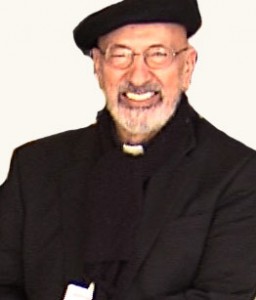 …Queen of Heaven. He talks about the joys and peace of the heavenly encounter with our Blessed Mother and with the Holy Trinity. It is a very special reflection…not to be missed!
…Queen of Heaven. He talks about the joys and peace of the heavenly encounter with our Blessed Mother and with the Holy Trinity. It is a very special reflection…not to be missed!
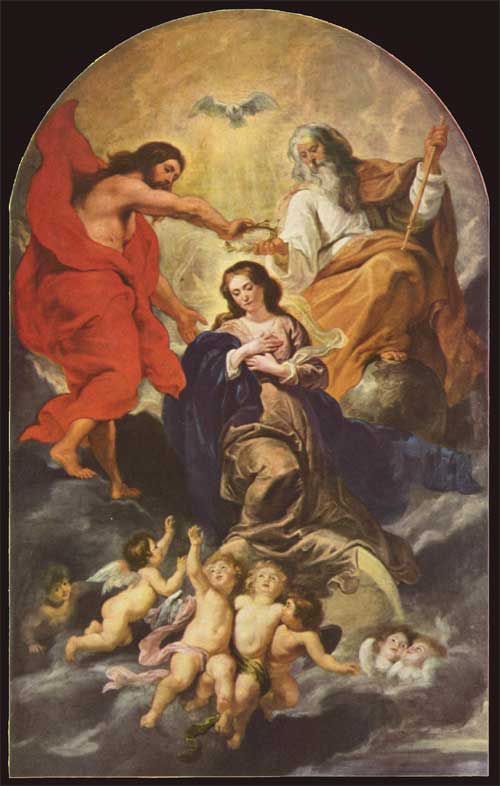 Msgr. John A. Esseff is a Roman Catholic priest in the Diocese of Scranton. He was ordained on May 30th 1953, by the late Bishop William J. Hafey, D.D. at St. Peter’s Cathedral in Scranton, PA. Msgr. Esseff served a retreat director and confessor to Blessed Mother Teresa.   He continues to offer direction and retreats for the sisters of the missionaries of charity around the world. Msgr. Esseff encountered St.  Padre Pio,  who would become a spiritual father to him. He has lived in areas around the world,  serving  in the Pontifical missions, a Catholic organization established by Bl. Pope John Paul II to bring the Good News to the world especially to the poor. Msgr. Esseff assisted the founders of the Institute for Priestly Formation and continues to serve as a spiritual director for the Institute. He continues to  serve as a retreat leader and director to bishops, priests and sisters and seminarians and other religious leaders around the world. Â
Msgr. John A. Esseff is a Roman Catholic priest in the Diocese of Scranton. He was ordained on May 30th 1953, by the late Bishop William J. Hafey, D.D. at St. Peter’s Cathedral in Scranton, PA. Msgr. Esseff served a retreat director and confessor to Blessed Mother Teresa.   He continues to offer direction and retreats for the sisters of the missionaries of charity around the world. Msgr. Esseff encountered St.  Padre Pio,  who would become a spiritual father to him. He has lived in areas around the world,  serving  in the Pontifical missions, a Catholic organization established by Bl. Pope John Paul II to bring the Good News to the world especially to the poor. Msgr. Esseff assisted the founders of the Institute for Priestly Formation and continues to serve as a spiritual director for the Institute. He continues to  serve as a retreat leader and director to bishops, priests and sisters and seminarians and other religious leaders around the world. Â
To obtain a copy of Msgr. Esseff’s book byvisiting here
Be sure to visit Msgr. Esseff’s website “Building a Kingdom of  Love”
Tags: Esseff, John A. Esseff, John Esseff
This entry was posted on Thursday, August 23rd, 2012 at 12:15 pm
You can follow any responses to this entry through the RSS 2.0 feed.
Fr. James Kubicki, the director of the Apostleship of Prayer, Â shares insights of the Queenship of Mary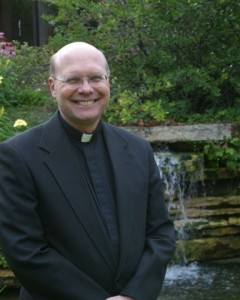
Tags: apostleship of prayer, blessed virgin mary, James Kubicki
This entry was posted on Wednesday, August 22nd, 2012 at 12:57 am
You can follow any responses to this entry through the RSS 2.0 feed.
Gregorian hymn chant of Roman Catholic Christian Church in honour of Mary, Mother of God. It is also a common prayer to the Virgin Mary; usually recited at the end of the rosary.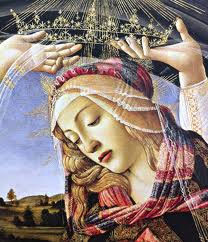
Tags: chant, prayer, rosary, virgin mary
This entry was posted on Wednesday, August 22nd, 2012 at 12:06 am
You can follow any responses to this entry through the RSS 2.0 feed.
[powerpress]Msgr. Esseff reflects on the Assumption of the Blessed Virgin Mary and it’s meaning for our lives and destiny. 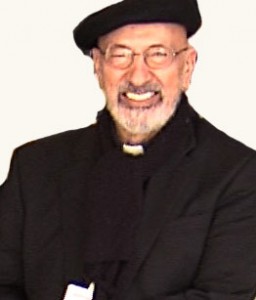 Â He brings forth from the liturgy of the day the Sacred Scripture a teaching which begins with fall of man, but the redemption brought about by Jesus Christ. Â And because of His Resurrection, death has no power over us. Â He
 He brings forth from the liturgy of the day the Sacred Scripture a teaching which begins with fall of man, but the redemption brought about by Jesus Christ.  And because of His Resurrection, death has no power over us.  He 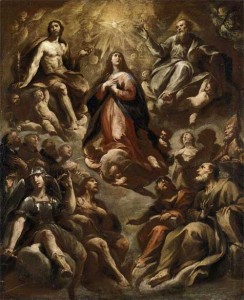 explains this by sharing the death of his own sister and the prayer of his mother.  Msgr. Esseff explains Mary sinlessness as the Immaculate Conception and the purpose of the Assumption.  He discusses Chap. 12 of the Book of Revelation, as well as Our Lady of Guadalupe and Fatima and the message for us today.  Msgr. Esseff talks about our struggles with death, not only our own, but also those of our loved ones.  How we hold on sometimes to tightly to those we should let go to the Father, because of our own fears and desires…and possibly our selfishness.  We need to remember  the joys of Eternal Life and the role of Mary, our Mother, who helps us with the transition.  Be not afraid!
explains this by sharing the death of his own sister and the prayer of his mother.  Msgr. Esseff explains Mary sinlessness as the Immaculate Conception and the purpose of the Assumption.  He discusses Chap. 12 of the Book of Revelation, as well as Our Lady of Guadalupe and Fatima and the message for us today.  Msgr. Esseff talks about our struggles with death, not only our own, but also those of our loved ones.  How we hold on sometimes to tightly to those we should let go to the Father, because of our own fears and desires…and possibly our selfishness.  We need to remember  the joys of Eternal Life and the role of Mary, our Mother, who helps us with the transition.  Be not afraid!
Tags: death, immaculate conception, jesus christ, sacred scripture, the assumption
This entry was posted on Wednesday, August 15th, 2012 at 3:00 pm
You can follow any responses to this entry through the RSS 2.0 feed.
“His mercy is on those who fear him from generation to generation”
[powerpress]
an excerpt from today’s reflection by Don Schwager: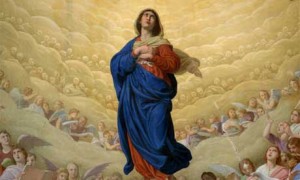
How strong is your hope in the promises of God? Mary is a model of faith and hope for us. And she is among “the first-fruits” of “all those who belong to Jesus” and who share in his triumph (1 Corinthians15:20-24). There is a venerable tradition dating back to the early church which marks Mary’s “falling asleep” (Feast of Dormition in many Eastern churches) and her heavenly birthday when she was received into heaven. Her reception into heaven is seen as a sign to all believing Christians of the promise Jesus made that we too would be received into paradise. At the last supper Jesus told his disciples that he would prepare a place for them in his Father’s house. “And when I go to prepare a place for you, I will come again and will take you to myself, that where I am you may be also” (John 14:3).
What enabled Mary to grow in faith and to persevere in hope in the face of obstacles and trials? The Gospel of Luke reveals the presence and power of the Holy Spirit in Mary’s life. When Elizabeth and Mary greeted one another they were filled with the Holy Spirit and with a joyful anticipation of the fulfilment of God’s promise to give a Savior. John the Baptist, even before the birth of the Messiah, pointed to his coming and leapt for joy in the womb of his mother as the Holy Spirit revealed to him the presence of the King to be born. The Holy Spirit is God’s gift to us to enable us to know and experience the indwelling presence of God and the power of his kingdom. The Holy Spirit is the way in which God reigns within each of us. Mary accepted her mission with uncompromising faith and obedience. She acted with unwavering trust and faith because she believed that God would fulfill the word he had spoken. Her great hymn of praise echoes the song of Hannah (see 1 Samuel 2:1-10) and proclaims the favor of the Lord:Â God exalts the lowly and he fills the hungry. The Holy Spirit is ever ready to renew your faith and hope in God’s promises and to make you strong in love for God and your neighbor. Do you live in the joy and confidence of God’s indwelling presence with you through his Holy Spirit?
“Lord Jesus, fill me with your Holy Spirit and give me joy in seeking you more closely. Increase my faith in all your promises, my hope in the joys of heaven, and my love for You as my All.”
for the full reflection visit : Daily Reading and Meditation
Tags: faith, heaven, holy spirit, hope, the assumption
This entry was posted on Wednesday, August 15th, 2012 at 12:06 am
You can follow any responses to this entry through the RSS 2.0 feed.
Holy Mary
From “Saints Speak”:
From heaven, in his own words, St. Alphonsus speaks on how the intercession of Mary is necessary for our salvation and shares the process of reviewing ones conscience before holy repentance..
Holy Repentance
Tags: blessed virgin mary, Holy Mary, holy repentance, repentance, st. alphonsus liguori
This entry was posted on Wednesday, August 1st, 2012 at 12:02 am
You can follow any responses to this entry through the RSS 2.0 feed.
[powerpress]
Tags: Mark Cyza
This entry was posted on Friday, July 27th, 2012 at 5:48 am
You can follow any responses to this entry through the RSS 2.0 feed.

